How to Eat Well on a Budget in Europe
Enjoying Traditional European Food on the Cheap
By Kelby Hartson Carr
Updated 1/21/2024 by Transitions Abroad
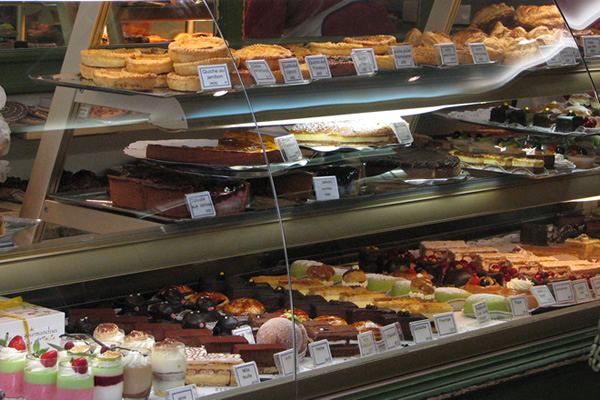
|
|
For lunch or dinner, pick up
an assortment of tasty sandwiches, quiches, and pastries
in Europe for less than the average lunch at a café/bistro,
and far less than the average dinner at a restaurant.
Picnic at a local
park, square, or where you wish and eat exceptionally
well. Photo © Transitions Abroad.
|
One of the most remarkable aspects of visiting Europe is the plethora and variety of excellent cuisines, from hours-long multi-course meals to simple market and bakery finds. It's one area where even budget-pressed travelers of all ages who are foodies will not wish to skimp. (Editor's note: Growing up with foodies parents who traveled decades in Europe with the enjoyment of great food as one of several significant motivations, we would drive far out of our way to be in areas known for their cooking traditions. Fortunately, you still don't have to spend a fortune to sample some of Europe's best flavors, especially now that the euro is nearing par with the U.S. dollar.) Backpackers, students, solo travelers, families, and mature travelers can eat like royalty while feeding the local economy and helping small farmers grow their produce with great care and pride.
Here are some tips for dining on a budget
in Europe (and enjoying every last morsel while you do it):
Bakeries and Pastry Shops
The cheapest breakfast in Europe is arguably its best: the stop at the local bakery or pastry shop. You can find delicious tastes throughout Europe, from baguettes and (chocolate) croissants in France to apple tarts and strudels in Germany. You can discover pretty hearty fare, like various takes on quiches and onion tarts. Best of all, these delectable and filling delights cost just a few euros and will leave you satisfied.
Budget tip: You should unquestionably only get breakfast at your hotel if you happen to be staying at an inn where breakfast is included, well-made, and inexpensive. At a typical European hotel, you could spend upwards of 15-20 euros per person for a breakfast that consists of coffee, average croissants, and packaged jam. In fact, it is sometimes automatically included, so be sure to inquire first. Even if you like your morning coffee, tea, or fresh-squeeze orange juice before venturing out, ask about just getting in-room service. Still often better than standard breakfasts at home but not nearly as good as what can be found at an excellent local breakfast hangout.
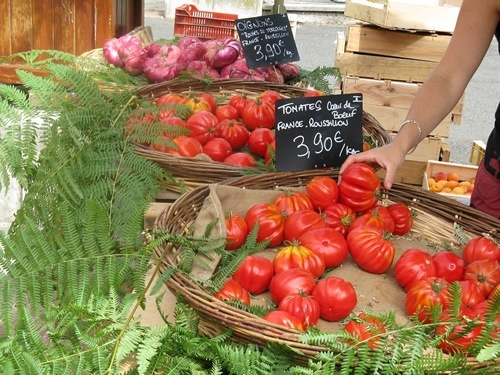
|
|
Tomatoes at markets in many parts
of Europe have so much taste they can be an entire
meal (though the Editor enjoys them with fresh goat cheese,
olive oil, and a baguette — but the regional options
are endless).
|
Fresh Produce Markets
Europe's fresh produce markets are a downright bacchanalia of tastes, colors, and lively social interaction. This is a miniature world in which farmers, tourists, locals, and chefs collide and interact.
Not only can you find delicious and fresh fruits and vegetables, but you can often find fresh-baked artisan breads, marinated olives, and farm-fresh cheeses. This can make a wonderful option for a budget breakfast or a satisfying lunch/picnic in a park or hotel to budget money for a later restaurant dinner.
Budget tip: Rent a vacation apartment or find accommodation with even a tiny kitchen. That will allow you to prepare your own meals at a fraction of the price of restaurant meals with the incredible fresh ingredients you discover at local markets and neighborhood grocers. You can't go wrong with ingredients so good and prepared foods available at European versions of outdoor delis, bakeries, dedicated cheese vendors, olive vendors, butchers, florists, vendors offering the best local herbs to flavor the produce, and much more. Many vendors enjoy their work so much they sing out their daily deals, so the whole experience is a feast for the senses, with people of all ages buying and selling.
Editor's
note: An added bonus is learning how to cook and incorporating local tastes, herbs, and recipes, which often is something you can bring home with you. This is how the editor learned to become a much better cook abroad and at home.
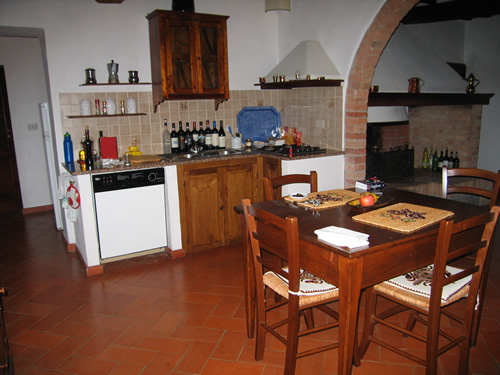
|
|
A rustic Italian vacation rental far off the beaten path in Tuscany allowed us to drink wine, relax, and cook using herbs and mushrooms from their land when we wished at a fraction of the cost of most hotels. The editor enjoyed the company and conversation with incredibly hospitable hosts who offered us delicious treats of all kinds, invited us to fantastic traditional meals with their friends, and encouraged us to join them in the kitchen to help.
|
Street Food in Europe
Fine dining in large European cities isn't usually cheap. However, plenty of inexpensive spots are open for local students, young people, bohemians, and others who love feasting. Street food sometimes still gets a bad rap among those older than college students or recent graduates, but it is often delicious. Buy a crêpe from a street vendor most anyplace in Paris, for instance, and it will taste delicious and cost a fraction of a similar dish at a café a few steps away.
Budget tip: Consider enhancing your meals with tasty small-change meals like those at markets, from street vendors, at bakeries, and the pastry shops mentioned above. Use most of your money for food in a single big restaurant meal daily. That is a wonderful way to avoid feeling cheated out of great food while on your trip, and you can save hundreds during your travels in so doing. Also, try having that big meal at lunch, when you can enjoy a popular restaurant but pay a fraction of dinner prices.
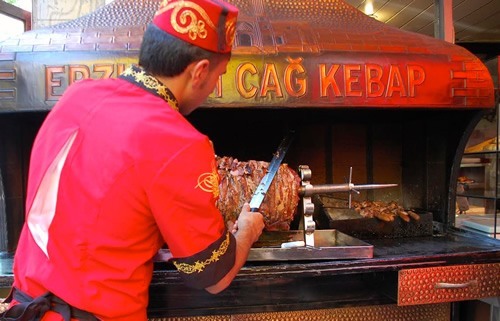
|
|
A street vendor
is making cag kebap by slicing pieces of meat off the rotating spit in Istanbul. Photo by Lies
Ouwerkerk.
|
Rural Dining in Europe
If possible, we recommend you venture into the European countryside for some great finds in local cuisine and rich cultural immersion experiences, where you will likely have more extensive contact with locals. Not only will you feel the joy of discovering a fantastic restaurant in a rural setting, but you will probably enjoy a traditional meal that is much more commonplace outside of the bigger cities. Take it slow at the location you are visiting. Chances are you will stumble onto some incredible local fare — often just by following your nose, looking at menus, or peeking into the establishment to get a sense of its authenticity and liveliness. When hunger strikes, we will often check out the menus and smells emanating from restaurants all across town before making our choice — a way of finding a meal that seldom disappoints and increases anticipation while satisfying our desire for great authentic food.
Budget tip: Consider staying at an inn featuring its own restaurant or even a more intimate bed and breakfast, in which your meals are included in the stay. For example, the Logis
de France inns often feature half-board or full-board meals with a stay, and many of these inns are as well known for their food as they are for their accommodations. The editor generally prefers to consult what he finds to be the dependable French
Guide Michelin for each country, highlighting great places to eat and often to stay that are relative deals. The Slow Food movement originated in Italy to combat the rise of fast food chains. There are branches all over Italy and Europe, with many restaurants serving traditional specialties at budget prices, sometimes in B&Bs.
Editor's
note: Obviously, sites such as Tripadvisor, Yelp, and other apps are ways to scrutinize and average out reviews for those who prefer the crowd-sourcing referral mode. However, such recommendations have often resulted in far less compelling and enjoyable food experiences, in our case, especially in Europe. The editor and many foodies with whom he travels or corresponds frankly try to minimize digital information when searching for local traditional food to be spontaneous and trust our instincts. In our experience, great food discoveries off-the-beaten path often result in the most memorable meals.
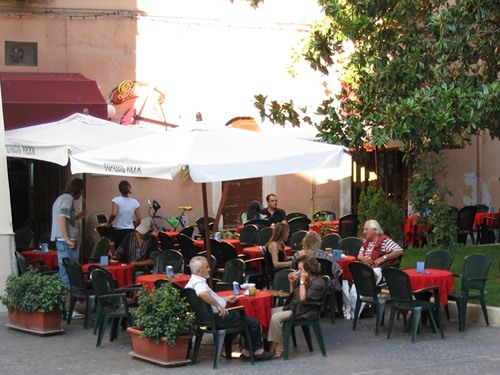
|
|
Relax and enjoy an inexpensive, casual country meal in Italy. |
Kelby
Hartson Carr is a travel writer who lived in France for a year and traveled extensively around Europe, enjoying great dining as much as possible.
|
